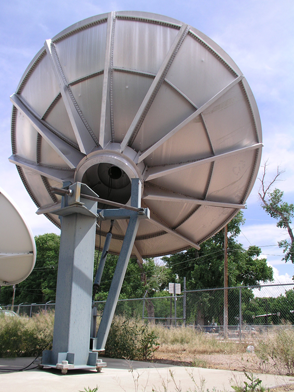|
What are they?
The major Satellite operators, companies like Worldskies, Intelsat, Eutelsat, Satmex and Telesat Canada provide two common types of commercial frequency to choose from. Our clients choose from either C-band or KU-band service. Each has its advantages and disadvantages. KU-band provides very high frequency transmissions well suited to TV transmission or credit card validation applications. cband a lower range frequency better suited to voice and ISP needs.
Broadcast truck operators favor KU Band because the smaller automatic antennas mount easily on trucks or even Sprinter vans. Because rain can degrade the KU band satellite transmission the broadcast truck operators normally have very high powered amplifiers in the truck giving them the ability to punch through the most difficult weather. A commercial installation such as an ISP or Cyber Café cannot justify the high cost of powerful amplifiers and therefore if they are operating in an area of heavy rainfall it is wise to choose C-Band from the outset. |

